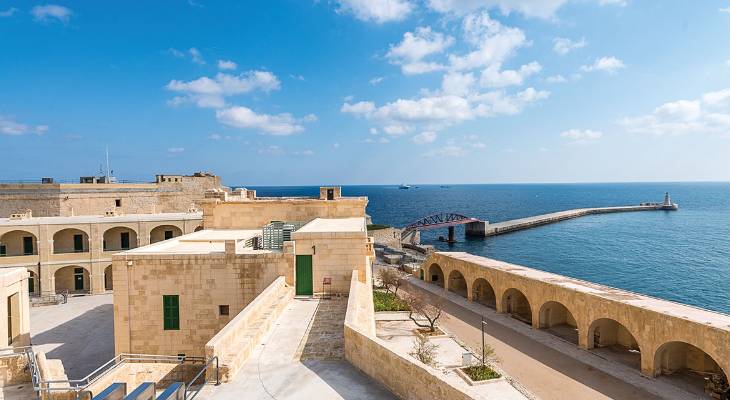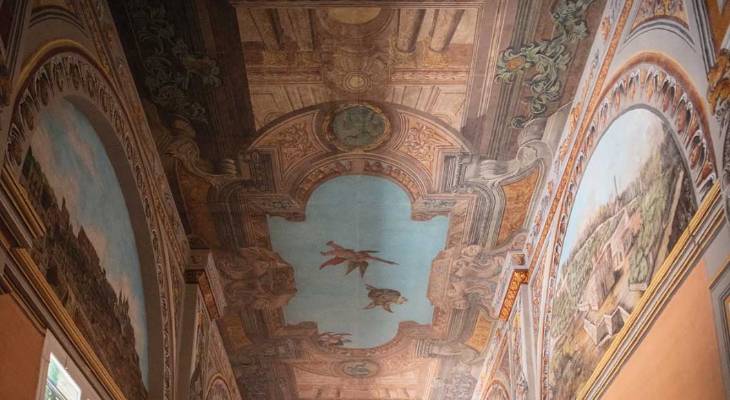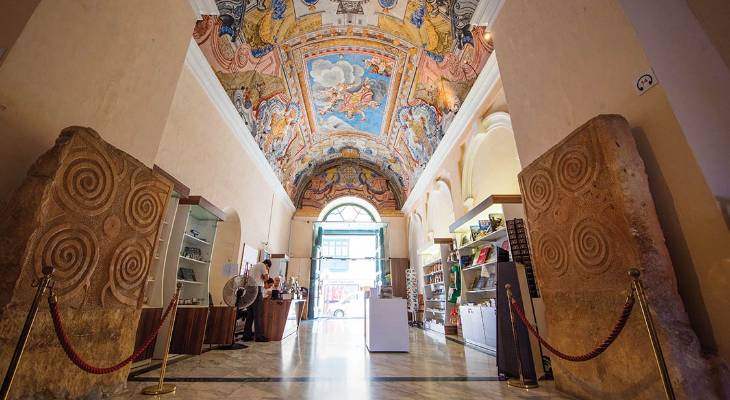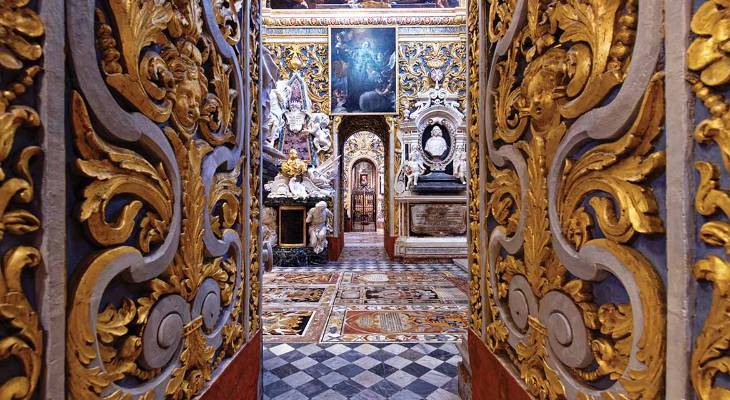Valletta, the capital city of Malta, boasts a rich and diverse heritage that reflects the intricate tapestry of its history.
With its strategic location in the Mediterranean, Valletta has been shaped by a succession of civilizations, from the ancient Phoenicians to the medieval Knights of St. John, and the colonial influences of the British Empire. This captivating heritage is vividly visible in the city's architecture, art, and traditions, creating a unique blend of cultural elements that continue to thrive and inspire visitors from around the world.
Fort St Elmo & The National War Museum
Having played a seminal role in the famed Great Siege of 1565, the star-shaped Fort St Elmo boasts a rich history dating back to the late-medieval period. Today, it is home to The National War Museum, displaying an extensive collection of items from prehistoric times, as well as military armour of the Order of St John and the Ottoman Turks, among others. You can also learn about the island’s important role in World Wars I and II.
Mediterranean Street (2123 3088, www.heritagemalta.mt)

Grand Master’s Palace & Armoury
This lavish palace was the seat of Malta’s rulers from the 16th century until 2015. Inside, the State Rooms are decorated with fine furniture, elaborate paintings, priceless Gobelin tapestries and illusionistic ceiling paintings. The Armoury, meanwhile, holds over 4,000 pieces of military hardware. The Palace has been closed for several months for the implementation of the most extensive restoration project ever embarked upon by Heritage Malta, the national agency for museums, conservation practice and cultural heritage. The ongoing, partly EU-funded project will cost approximately €30 million once complete, with phases expected to start being opened to the public in the second half of 2023. The entire project is projected for completion by 2025.
St George’s Square (2124 9349, www.heritagemalta.mt)

Jesuits Church
Originally built between 1593 and 1600 by the Jesuit order, this church is one of the oldest in the capital, though the church you see today was reconstructed in the Baroque style in the 17th century, following an explosion in a nearby factory in 1634. Forming part of a complex that also comprises Malta’s old University building, it continues to be used for annual graduation ceremonies today.
Merchants Street (2722 1241)
Lascaris War Rooms
Located 45m under the Upper Barrakka Gardens and the Saluting Battery, the Lascaris War Rooms represent one of Malta’s best-kept secrets from World War II. This network of underground tunnels and chambers housed the headquarters of the British Army in Malta and, from here, the defence of the island against Axis aggression was waged and all offensive operations in the Mediterranean were directed. The War Rooms were later used by NATO as a communication centre at the height of the Cold War.
Lascaris Ditch (2123 4717, www.lascariswarrooms.com)
Malta Postal Museum
Set within a converted Maltese townhouse, the Malta Postal Museum is home to an extensive collection of postal artefacts related to Malta’s long and colourful history, beginning as far back as the 16th century. It hosts temporary exhibitions throughout the year, and also features a kids’ area and onsite post office.
135, Archbishop Street (2596 1750, www.maltapostalmuseum.com)
MUŻA (The National Community Art Museum)
Housed within the historic and impressive Auberge d’Italie, MUŻA is the island’s national community art museum. The collections here feature works dating back to several periods throughout history, ranging from the late medieval to the contemporary periods. Among them are priceless paintings, sculptures, majolica, furniture, and silver by local and international artists, including Mattia Preti, Victor Pasmore and Antonio Sciortino. The contemporary museum also boasts four dining areas, including a delightful courtyard restaurant and a private dining room.
Auberge d’Italie, Merchants Street (2395 4500, www.heritagemalta.mt)
National Library
Founded in 1776, the National Library is one of the island’s national treasures. Apart from the building itself – an arresting, late-18th century Neoclassical structure with an equally handsome interior – it is home to a wonderful collection of books, manuscripts, maps, and documents from medieval times right through to the digital age, including all state archives of the Order of the Knights of St John from its foundation in 1113.
36, Old Treasury Street (2598 3550)
National Museum of Archaeology
Housed within the Auberge de Provence, Malta’s National Museum of Archaeology brings together a collection of artefacts ranging from the Neolithic period (5,900BC) up to the Phoenician period (400BC), offering a fascinating introduction to the prehistory and early history of the Maltese islands. The building itself is an attraction, with the painted hall of the Gran Salon on the upper floor boasting beautiful decorations dating to the early 1800s.
Auberge de Provence, Republic Street (2122 1623, www.heritagemalta.mt)

Our Lady of Victory Church
This humble church’s claim to fame is its history. As the first structure to be built in the city of Valletta, it stands on the site where a ceremony was held to commemorate the laying of the foundation stone of the city. It was personally funded by Grand Master de la Valette in thanksgiving for the Knights’ victory over the Ottomans during the Great Siege of 1565.
Victory Square (www.ourladyofvictory.org.mt)
St John’s Co-Cathedral
Known and celebrated around the world, the famed conventual church of the Order of the Knights of St John was designed by Maltese architect Girolamo Cassar and is widely considered to be the jewel of Valletta. Dedicated to St John the Baptist, it was commissioned in 1572 and completed in 1577. Walking up to it, you may find it underwhelming, but don’t let the plain Mannerist façade fool you – the interiors are lavish. Italian artist Mattia Preti was entrusted with most of its embellishment, and among the countless treasures within, Caravaggio’s ‘The Beheading of St John the Baptist’, displayed in the Oratory, is undoubtedly the most notable.
St John’s Square (2122 0536, www.stjohnscocathedral.com)

St Paul’s Pro-Cathedral
St Paul’s Pro-Cathedral, officially The Pro-Cathedral and Collegiate Church of St Paul, is the only Anglican cathedral in Malta. Commissioned by Queen Adelaide, the widow of King William IV, who wanted a place of Anglican worship on the island during her stay in the 19th century, its 60m spire is an iconic landmark of Valletta’s skyline, visible from towns and cities around the harbour.
Independence Square (2122 5714, www.anglicanmalta.org)
St Paul’s Shipwreck Church
With origins traced back to the 1570s, St Paul’s Shipwreck Church is one of the oldest and most important churches in Valletta. Although it was completed by 1582, its façade was rebuilt in 1885 according to the design of architect Nicola Zammit. Inside, you’ll find numerous treasures, including the relic of the wrist bone of St Paul, displayed in an elaborate gold niche.
74, St Paul Street (2122 3348)
Which is your favourite Valletta heritage attraction?